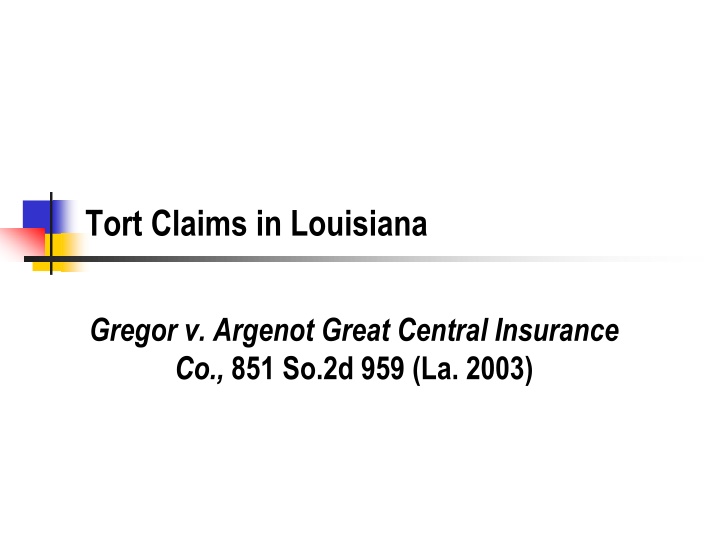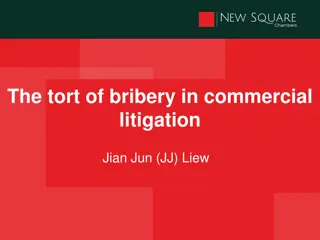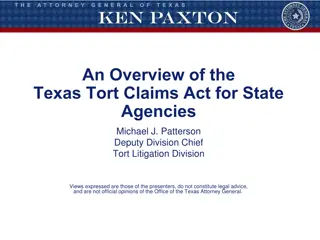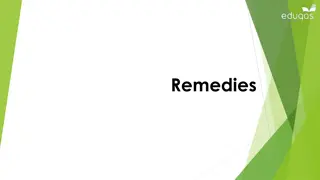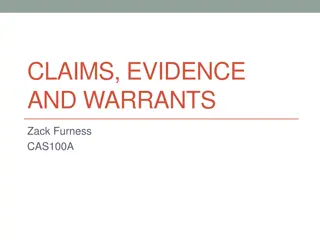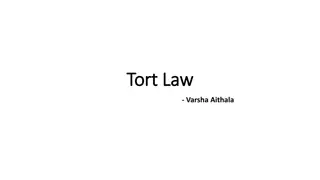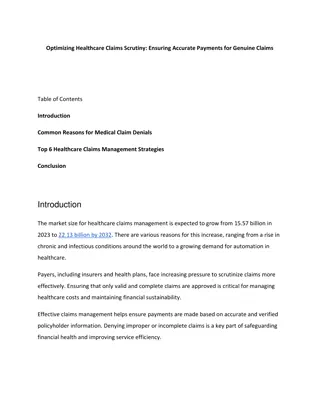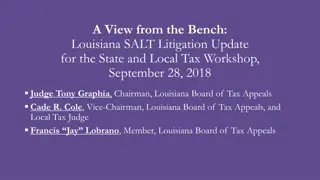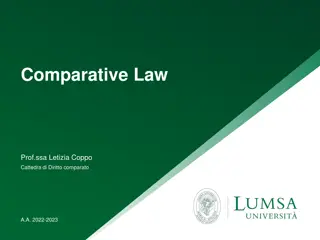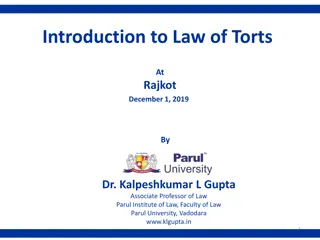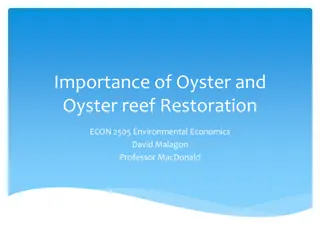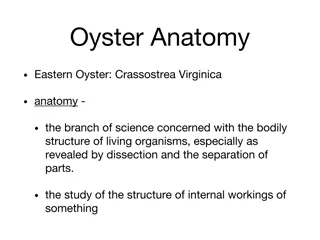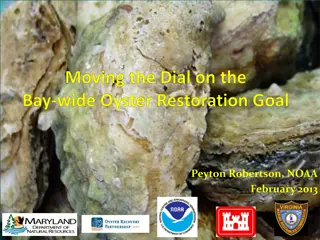Overview of Tort Claims in Louisiana regarding Raw Oyster Consumption
Exploring the legal aspects of consuming raw oysters in Louisiana, this content delves into tort claims, the standards for oysters, state warnings, the required posting of warnings, and specific details from the case Gregor v. Argenot Great Central Insurance Co., shedding light on plaintiff's claims, the defense, negligence theories, and causation issues.
Download Presentation

Please find below an Image/Link to download the presentation.
The content on the website is provided AS IS for your information and personal use only. It may not be sold, licensed, or shared on other websites without obtaining consent from the author.If you encounter any issues during the download, it is possible that the publisher has removed the file from their server.
You are allowed to download the files provided on this website for personal or commercial use, subject to the condition that they are used lawfully. All files are the property of their respective owners.
The content on the website is provided AS IS for your information and personal use only. It may not be sold, licensed, or shared on other websites without obtaining consent from the author.
E N D
Presentation Transcript
Tort Claims in Louisiana Gregor v. Argenot Great Central Insurance Co., 851 So.2d 959 (La. 2003)
Raw Oysters What do oysters eat? Hepatitis A - traditional Liver disease some die vibrio vulnificus - the new threat acute liver disease and failure various other nasty vibrios This is why God made deep fat fryers 2
Tort Standards for Oysters The foreign/natural distinction Cherry pits, chicken bones The consumer expectations test Is it something that a reasonable consumer would expect to be in the food? This is the prevailing view. Do consumers expect vibrio vulnificus or hepatitis A? What about Is this like fugu - puffer fish - sushi? What is the role of the warning?
State Warning THERE MAY BE A RISK ASSOCIATED WITH CONSUMING RAW SHELLFISH AS IS THE CASE WITH OTHER RAW PROTEIN PRODUCTS. IF YOU SUFFER FROM CHRONIC ILLNESS OF THE LIVER, STOMACH OR BLOOD OR HAVE OTHER IMMUNE DISORDERS, YOU SHOULD EAT THESE PRODUCTS FULLY COOKED. What are the limitations of this warning for establishing assumption of risk? 4
Where Does the Warning Have to be Posted?? Section 23:006-4 of the Sanitary Code requires that all "establishments that sell or serve raw oysters must display" a prescribed warning "at point of sale." The establishment has discretion in determining what method may be used to convey the warning because the warning can be conveyed by a sign, menu notice, table tent or other clearly visible message. What is the critical language? 5
Gregor v. Argenot Great Central Insurance Co., 851 So.2d 959 (La. 2003) What happened to plaintiff? Preexisting illness? What if he did not have a preexisting illness? Where was the sign posted? Where did plaintiff eat? Did he see the sign? 6
The Claims Who did the plaintiff sue? What was the comparative fault assessment? What is the plaintiff's negligence theory against the state? What is the causation issue? Why was DHH assessed so much fault? What is the state's defense? How does plaintiff attack this defense? 7
Court's Analysis The Court's use of Berkowitz is confusing. It rejects the Fowler's court's reliance on Berkowitz because the LA statute is different It then appears to use an analysis that is consistent with Berkowitz and other FTCA cases in its resolution of the case How is this case like Berkowitz? What is the role of the regulation? How is the agency arguing that the reg does not apply? 8
What was the Real Negligence of DHH? Did it really allow inspectors to decide what point of sale meant? DHH had a mandatory duty to properly enforce the sanitary code. La. R.S. 40:4A. We find that DHH was negligent in failing to properly train its sanitarians and failing to properly provide them with interpretations of the Sanitary Code terminology, specifically as to what the term "point of sale" means. Was the restaurant also liable? Bad oysters or bad warning? How did the court modify the allocation of fault? 9
